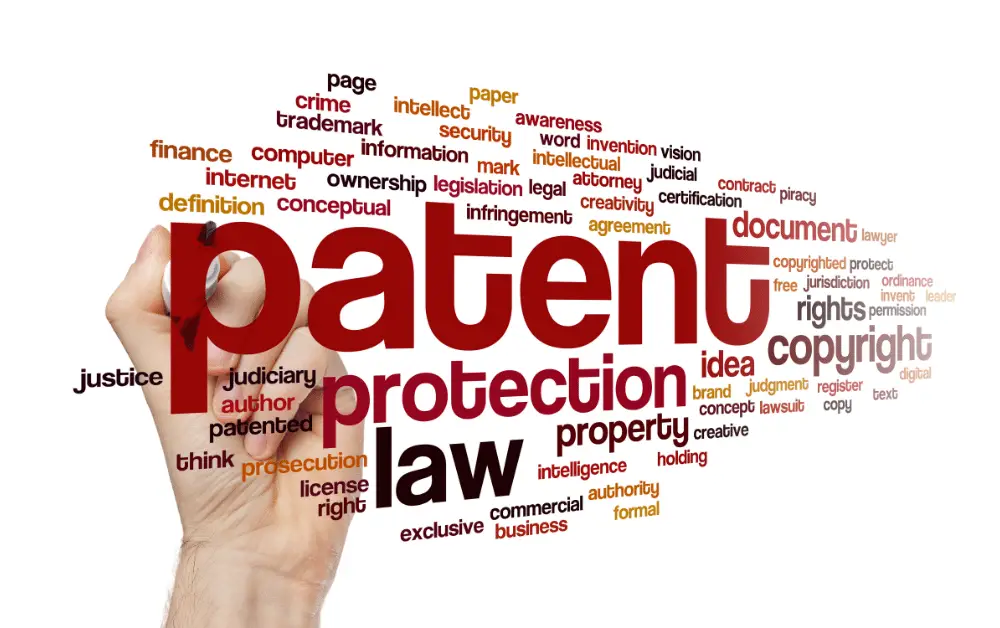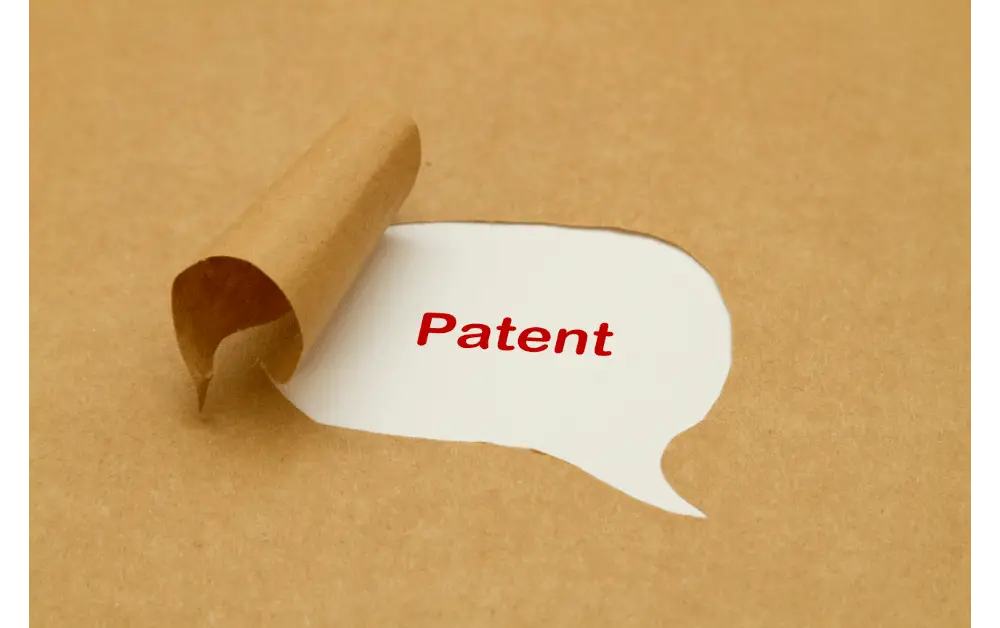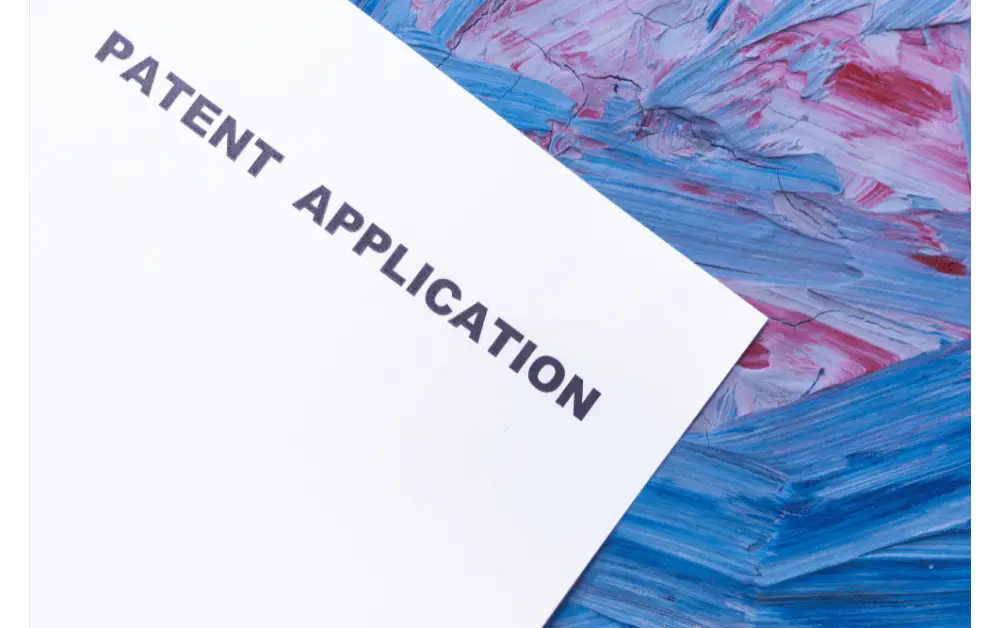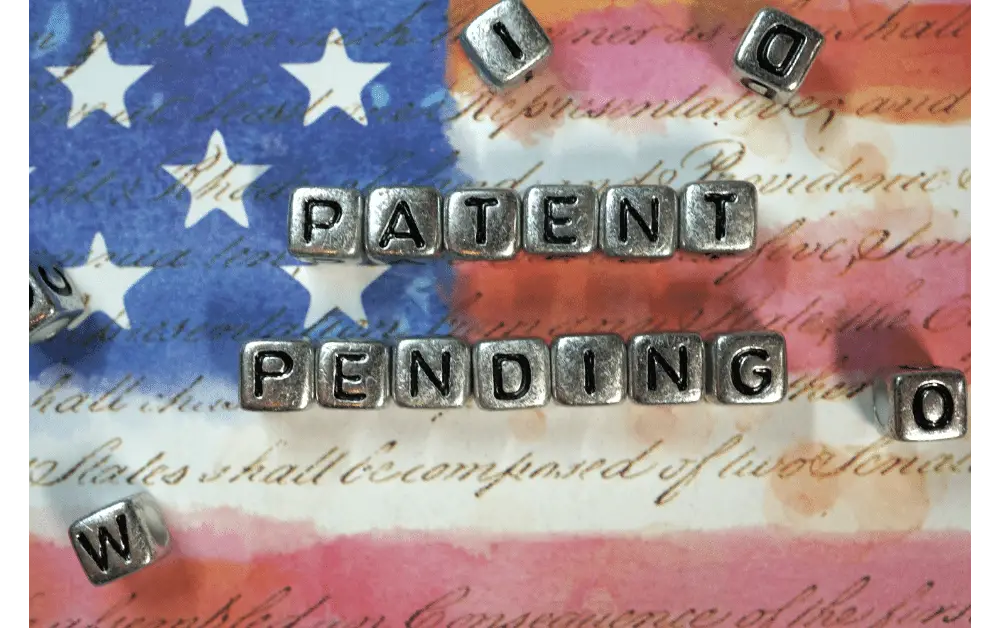Last Updated on June 7, 2022 by Fair Punishment Team

You’ve got the next great invention? You’ve got a genius new design for shoe that makes you jump higher or run faster? Whatever your idea, you’re going to need to file a patent to protect your idea from being copied by someone else. There are different types of patents (depending on the type of patent you’re seeking) that protect your new and useful inventions from being re-used by anyone other than you. After reviewing the common patent types, we’ll discuss a patent example or two, we’ll discuss fees and the overall process. This article also discusses patent law, what claims are protected after you obtain a patent versus the patent pending status.
While this article is great for discussing the basics, there is no substitute for the advice of a lawyer or law firm. Realistically, if you have a great invention and want to ensure the process is followed correctly, you need a lawyer or patent expert to help you with the USPTO filing.
Let’s get started.
What is a patent?
A patent is a document that gives inventors the right to exclude others from making, using, or selling your invention for up to 20 years. In exchange for this protection, you must publicly disclose your invention in the form of a written patent application.
A registered patent gives the holder protection of their idea and also acts as a public record, so that others are aware that the idea is already taken. Patent registration also allows the owner to take legal action if someone does copy their idea.
It’s also worth noting that a patent does not give you the right to make, use, or sell your invention. Rather, it gives you the right to exclude others from doing so.
What are the different types of patents?
-Utility Patent: Covers the invention of a new and useful process, machine, article of manufacture, or composition of matter, or a new and useful improvement thereof. An example of a utility patent is the patent held by Apple for the design of the iPhone. Another example of a utility patent is the patent held by Microsoft for the “ribbon” interface used in their software products. A utility patent is often used for products, processes, and machines.
-Design Patents: Covers the novel, non-functional (new and original) design of an article of manufacture. An example of a design patent is the design of the Coca-Cola bottle. Another design patent example is the design of the Barbie doll. Ornamental design patents can also be obtained for furniture, jewelry, and other objects.
-Plant Patents: Covers asexually reproduced plant varieties.
-Plant Patents: Covers asexually reproduced plant varieties. An example of a plant patent is the “Breckenridge” rose.
-Software Patents: Covers a new and useful software-related invention. An example of a software patent is the patent held by Amazon for the “1-Click” ordering system. Another example of a software patent is the patent held by Google for the ranking algorithm used in their search engine.
Whether you are seeking utility patents or design patents, a lawyer can help you research and understand the cost to to get started or to take your idea to completion. Research is needed at every level, from design to ensuring another inventor has not already patented the same idea for their own business.
When can you obtain a patent?
You can only get a patent for your business if your invention is:
-Patentable: This means that your invention must be novel (new), non-obvious, and have utility (useful).
-Not previously patented by someone else: A Patent Search will show you whether your invention has already been patented.
-Not in the public domain: Your invention cannot be something that is publicly known or available, such as a law of nature.
These requirements are not what could be done, but what must be done. Your idea is just an idea until you’ve filed your patent applications for protection.
The Patent Process – How to obtain a patent application

Now that we know what a patent is, let’s discuss the process of obtaining one. The first step for inventors to legally protect against other business claims is to make sure your inventions are fully developed. To receive patent protection, your idea must meet minimum requirements.
You will also want to do a Patent Search to make sure that no one else has already patented your invention.
You will likely work with a lawyer and the law firm will help you to file the patent application with the USPTO.
The USPTO has different types of applications, depending on the type of patent you are seeking:
-Utility Patents Application
-Design Patents Application
-Plant Patents Application
-Software Patents Application
The USPTO will also issue patents for:
-Reissue patents;
-Patents of addition;
-Continuation patents; and
-Continuation-in-part patents.
You will also need to pay a filing fee when you submit your application. The USPTO has a fee schedule that lists the different filing fees for each type of patent application.
After you have filed your application, the USPTO will review it to make sure it meets all the requirements. If it does, they will issue you a patent.
Why is it important to get a patent?
Registered patents are afforded substantial protection to inventors under the federal system in the United States through the patent and trademark office. There are a few reasons why you might want to get a patent to protect your business invention:
-To stop others from making, using, or selling your invention.
-To make money off your invention by licensing it to others.
-To attract investors to help you commercialize your invention.
What are the benefits of having a patent?
Some benefits of having a patent include:
-The ability to stop others from making, using, or selling your invention .
-The ability to make money from your invention by licensing it or selling it.
-The potential to attract investors to help you commercialize your invention.
-Using the law to protect your inventions and idea from copying by another business.
What are the drawbacks of not getting a patent?
If you don’t get a patent, then:
-Others may be able to make, use, or sell your invention without your permission.
-You may not be able to make money from your invention.
-You may have a harder time attracting investors to help you commercialize your invention.
How long does a patent last?
A patent generally lasts for 20 years from the date you file your application with the USPTO. However, there are a few ways that a patent can expire before the 20-year mark.
What is a Patent Search and why is it important?

A Patent Search is an important step in the patenting process because it allows the inventor to see if anyone else has already patented your invention. If someone has already patented your invention, then you will not be able to get a patent. This step often requires substantial research and investment which could result in an attorney recommending that you not file your idea for patent protection. Furthermore, if you try to patent an invention that is not novel (new), the USPTO will reject your application.
There are different ways to conduct patent searches, which were also discussed in the article discussing how to patent an idea. One way to conduct a search is by hiring an attorney. Another way to conduct a patent search is on your own through the USPTO website or a private patent search company. Making sure your invention is legal could ensure that your application process will go smoothly and legal advice for this process is highly recommended.
Conducting a Patent Search: As discussed earlier, you will want to conduct a patent search to make sure that your invention is novel and not obvious to someone with ordinary skill in the field.
Aside from designing your unique invention conducting a thorough patent search is one of the most important, time consuming and expensive parts of the patent process. You will need to dedicate adequate time to this process to ensure you do not waste money on an application that will be rejected. If you want to know if you could or should get a patent for your invention, you should search for any existing patents that cover your invention.
You (or a search expert) can do this by:
1. Searching the USPTO Patent Full-Text and Image Database;
2. Searching the USPTO Patent Application Full-Text and Image Database; and/or
3. Searching privately held databases.
After you have searched and found no similar patents, you can move on to the next step with your attorney, or on your own. If you get through this step unfazed, your idea has tremendous potential.
Intellectual property
Patents are a type of intellectual property right, which is different from a personal property or real property right. Intellectual property rights were discussed at length in our article discussing how to trademark an idea. Intellectual property rights give the holder the exclusive right to use, make, or sell an invention for a certain period of time. Intellectual property rights provide patentees with the right to exclude others from using their invention. Patent law is governed by federal law, and patents are granted by the USPTO. An attorney could explain this idea to you in greater detail if questions remain.
Types of Patent
Getting a patent for an idea is just one type of intellectual property right. Other types of intellectual property rights include:
-Trademarks
-Copyrights
-Trade secrets
Each type of intellectual property right has its own set of rules and requirements. For example, the process of obtaining a copyright is different from the process of obtaining a patent.
In general, patents are more difficult to obtain than other types of intellectual property rights because they require that your invention is novel (new) and not obvious to someone with ordinary skill in the field. Furthermore, patents are only granted for inventions that have a practical application. This means that your invention or idea must be able to be made or used in some way.
Protect your invention by filing and application
After conducting extensive research and deciding that your idea or inventions are protectable by filing a United States patent, protection through the the USPTO is obtained by filing a patent application.
How to file a Patent Application

The cost to file a patent application process depends (usually several thousands of dollars) on the type of patent you are seeking, but typically range from $5,000 to $15,000. The process can be complex and time consuming. Invention works best when it’s disclosed to the public, so you will want to file your patent application as soon as possible. After you apply for a patent it can take up to two years for the USPTO to review and either approve or reject your application.
The steps involved in filing a patent application include:
1) Hiring a Patent Attorney or Agent
2) Filing a Provisional Patent
3) Conducting a Patent Search
4) Drafting the United States Patent Application
5) Filing the Patent Application with USPTO
6) Responding to Office Actions from USPTO
7) Patent Allowance and Issue
It has been referenced several times to hire an attorney, and
Receiving the Patent Certificate and Maintenance Fees
It is important to note that you must pay maintenance fees to keep your patent in force. These fees are due 3.5, 7.5, and 11.5 years after the patent is granted. The fees are as follows:
-3.5 years: $1,600
-7.5 years: $3,400
-11.5 years: $5,600
If you fail to pay the maintenance fees, your patent will expire and you will no longer have any legal rights to your invention.
Fees are subject to change and it is recommended that you research the costs of filing your application through the patent and trademark office website to ensure your the fees on your filing date.
Reasons for Patent Rejections:
There are many reasons why your patent application may be rejected. The three most common reasons for rejections are:
-lack of novelty
-obviousness
-indefiniteness
It is important to note that you can receive multiple rejections for the same application.
If you receive a rejection, you have the option to file a request for continued examination (RCE) which will allow you to make changes to your application and submit it for another review.
It is also important to note that the USPTO is not required to give you a reason for why your application was rejected. However, if you do receive a rejection, you can hire a patent attorney to help you navigate the process.
Enforcing Your Patent Rights

Hiring a Patent Attorney or Agent: You will want to hire a patent attorney or agent who is experienced in filing patent applications with the USPTO. The attorney or agent will be able to help you navigate the process and ensure that your application is properly filed. Once applying for a patent is complete and your patent is obtained, you will be able to enforce your patent rights. Enforcing your patent rights means that you can sue someone who is infringing on your patent.
You can also choose to license your patent to someone else. This means that you give them the right to use your invention in exchange for royalties or other compensation.
When deciding whether to enforce your patent rights or license your patent, you should consider the following:
-The costs of enforcement
-The likelihood of success
-The resources available to you
-The potential damages you could recover
Filing a Provisional Patent

A provisional patent application gives you “patent pending” status for your invention or idea. This means that you have filed a United States patent application with the USPTO, but it has not yet been reviewed or approved. A provisional patent is typically less expensive and easier to obtain than a non-provisional patent. Why would you file a provisional patent? To buy yourself time. A provisional patent is only valid for 12 months, so it gives you time to further develop your invention and decide if you want to file a non-provisional patent. You will need to research whether it’s best in your situation to file a provisional patent application or a regular application to patent your idea. Even if there is a difference in cost of thousands of dollars, to patent an idea, like a utility patents outline or a design patent drawing, it may be important to file the patent as soon as possible with he united states patent and trademark office.
Drafting the Patent Application
The next step is to draft the patent application. This includes providing a detailed description of your invention or idea as well as any drawings or illustrations that may be required. The application drafting process includes several steps, such as:
-Identifying the invention
-Determining the purpose of the invention or idea
-Creating a written description of the invention
-Preparing drawings or illustrations of the invention (if required)
After the application is drafted, it must be submitted to the USPTO along with the filing fee.
The USPTO will then review the application to determine if it meets all of the necessary requirements.
Filing the Patent Application with USPTO
After the application is drafted, you will need to file it with the USPTO. This can be done online or by mail. The filing date is the date on which the USPTO receives your application.
Responding to Office Actions from USPTO
Once your application is filed and filing fees paid, you may receive an office action from the USPTO. This is a rejection of your patent application. You will have to respond to the office action and may have to make changes to your application before it will be approved.
Patent Allowance and Issue
If your patent application is approved by the United States patent and trademark office, you will receive a patent allowance. This means that you can now proceed to the next step, which is filing for a patent certificate.
Description of the invention
The invention must be described in enough detail that someone with ordinary skill in the field would be able to make and use it. The description should include any drawings or illustrations that may be required.
Patent Claims
The claims define what is protected by the patent. They are important because they set the scope of the protection that the patent provides
Obtain a patent
After you have filed your patent application and it has been approved, you will need to pay the required fees and obtain a patent certificate.
Trademark office USPTO
You will also need to file your trademark with the USPTO. This is done to protect the name of your invention.
United States Patent and Trademark is the Federal agency responsible for granting US patents and registering US trademarks.
Patent Pending
Patent Pending means that you have filed a patent application with the USPTO, but it has not yet been reviewed or approved.
Regular Patent Application
A regular patent application is an application filed when a provisional patent is not filed first, or when a provisional patent has expired. A Provisional Patent Application is a lower-cost alternative to filing a regular patent application. It allows you to get “patent pending” status for your invention.
Non-provisional Patent Application
Non-provisional Patent Application is filed when a provisional patent has expired.
Patent Filing/Actual Patent granted
An Actual Patent is granted to the inventor by the USPTO. Patent Pending just means that you’ve filed an application for a patent.
How to get a patent: To get a patent, you need to:
– Make sure your idea is patentable
– Conduct a patent search
– Draft the patent application
– File the patent application with USPTO
When the patent application is filed a Detailed Description of the invention is also filed which includes any drawings or illustrations that may be required.
– Respond to office actions from USPTO (if necessary)
– Patent Allowance and Issue
– Obtain a patent certificate
After you have filed your patent application and it has been approved, you will need to pay the required fees and obtain a patent certificate.
You will also need to file your trademark with the USPTO. This is done to protect the name of your invention.
Filing a patent application can be a complex process, so it’s important to seek the advice of a patent attorney or agent if you have any questions.
The Patent Process is Long and Expensive
Now you know how to get a patent. It is important to keep in mind that the patent process is long and expensive. The average time it takes to obtain a patent is about two years. This is not meant to discourage you from filing a patent, in fact, hopefully this article inspires you to file a patent to protect your invention or idea. It’s crucially important that you understand the process and what to expect before you file a patent application.
Conclusion

I am not your attorney or Patent Agent, so I cannot give legal advice. The information in this article is for informational purposes only and should not be construed as legal advice. Please consult a Patent Attorney or Patent Agent for legal advice regarding your specific situation. That concludes how to get a patent article, thank you for reading.

